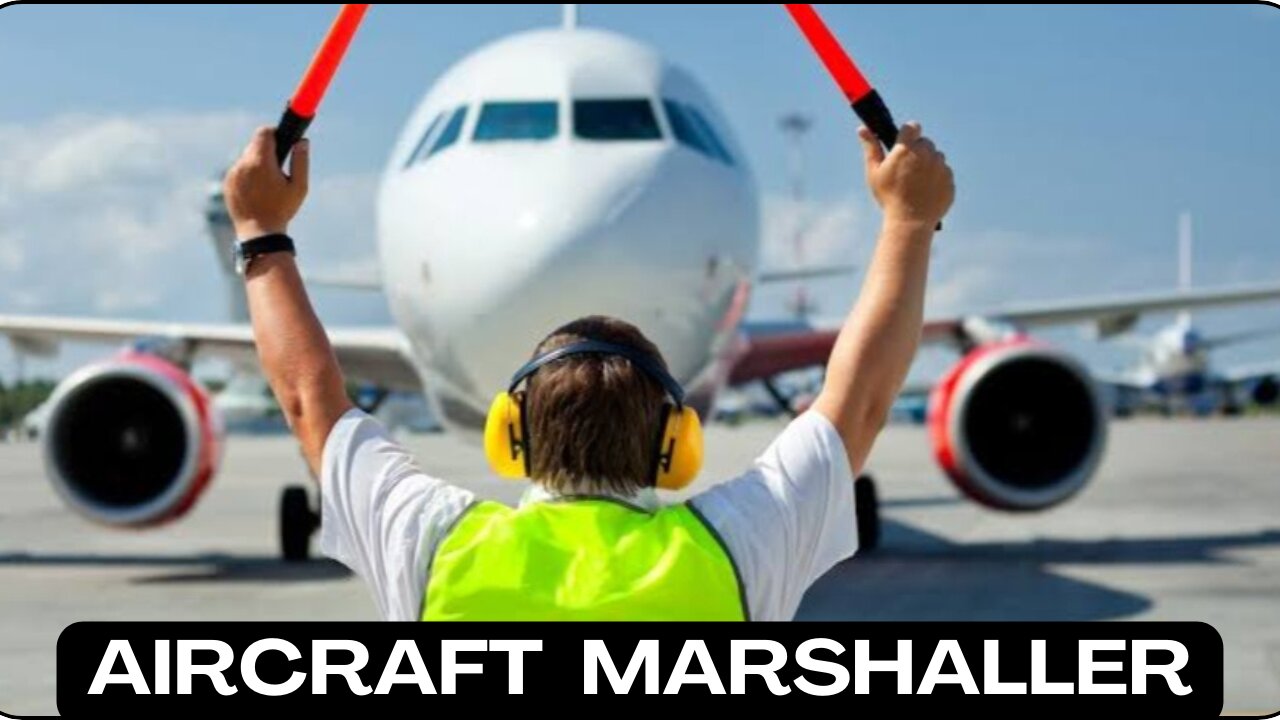Premium Only Content

Aircraft Marshaller
A marshaller in aviation is a ground crew member responsible for guiding aircraft on the ground, assisting pilots during taxiing, parking, and pushback procedures. The marshaller plays a crucial role in ensuring the safe and efficient movement of aircraft on the airport apron and taxiways.
Responsibilities:
Communication: Marshalling involves clear communication between the marshaller and the aircraft's cockpit crew. The marshaller uses standardized hand signals or radio communication to convey instructions to the pilot.
Guidance: The marshaller guides the aircraft using a set of predetermined hand signals, indicating directions to turn, stop, or align with the parking spot.
Safety: Ensuring safety is paramount. Marshalling helps prevent collisions, guides the aircraft away from obstacles, and ensures proper spacing between aircraft and ground equipment.
Appearance:
Marshaller typically wears high-visibility clothing, often orange or yellow vests, to enhance visibility on the apron.
Equipment:
Marshalling Wands or Batons: These are handheld illuminated wands with colored lights that can be used during low-light conditions to enhance visibility of signals.
Headset or Handheld Radio: Marshaller communicates with the cockpit crew using either hand signals or a radio to convey instructions clearly.
Training:
Basic Aviation Training: Marshalling training is often part of the basic training for ground handling personnel. This includes understanding airport operations, safety protocols, and communication procedures.
Hands-on Training: Trainees undergo practical, hands-on sessions where they learn and practice the various hand signals used in marshalling.
Safety Procedures: Training emphasizes safety protocols, including awareness of aircraft movements, potential hazards on the apron, and emergency procedures.
Aircraft Familiarization: Marshalling personnel need to be familiar with different types of aircraft and their characteristics to provide effective guidance.
Certification: Successful completion of training programs may result in certification or licensing for marshalling activities, ensuring that individuals meet the required standards.
Overall, marshalling requires a combination of communication skills, situational awareness, and practical training to guide aircraft safely on the ground. The goal is to facilitate smooth ground operations and enhance the overall efficiency of airport services.
-
 2:35:52
2:35:52
Jewels Jones Live ®
1 day agoELECTION OVER - LIES CONTINUE | A Political Rendezvous - Ep. 100
93K77 -
 3:59:18
3:59:18
GamerGril
1 day agoPAGING ALL ZOMBOIZ | DEAD ISLAND 2
203K22 -
 42:24
42:24
MYLUNCHBREAK CHANNEL PAGE
1 day agoA Century Gone
213K143 -
 38:22
38:22
Stephen Gardner
1 day ago🔥HOLD ON! The RUMORS about Kamala are TRUE...
254K752 -
 1:22:44
1:22:44
Michael Franzese
1 day agoWill Trump’s Win Finally Convince Democrats to Stop The Woke Nonsense??
213K175 -
 8:27:07
8:27:07
MDGgamin
1 day ago🔴LIVE- Rumble Gaming To The MOON - Variety of Games & Chatting - #RumbleTakeover
182K5 -
 27:24
27:24
Mr. Build It
6 days agoDECK DISASTER! How We Fixed a Botched Build
141K19 -
 26:58
26:58
barstoolsports
1 day agoZach Bryan Blocks All of Barstool | Stool Scenes
147K20 -
 1:06:44
1:06:44
Talk Nerdy 2 Us
1 day ago🔥 Hackers vs. The World: From Amazon breaches to FBI-confirmed Chinese telecom spying
129K23 -
 1:24:20
1:24:20
Vigilant News Network
1 day agoJoe Rogan Drops Shocking Election Claim | The Daily Dose
191K225